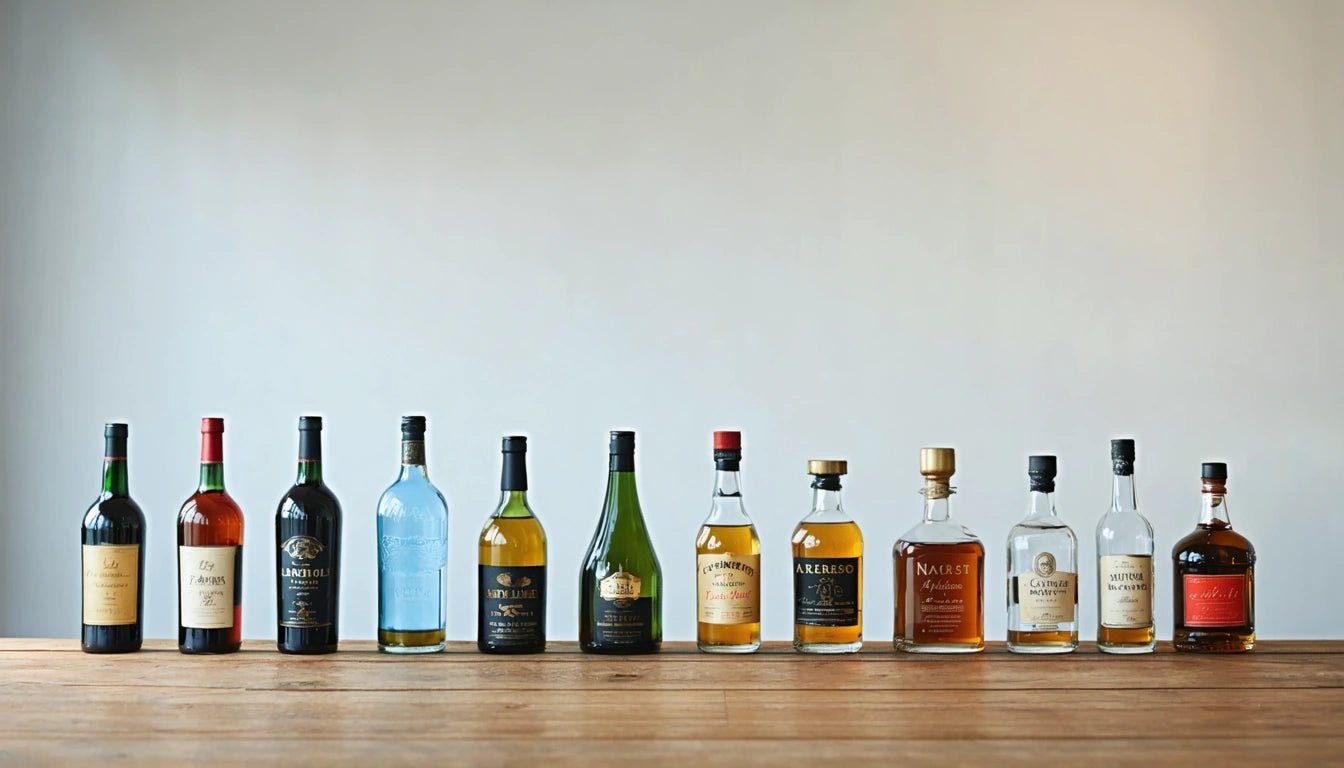Table of Contents
Understanding Alcohol Measurements: What Is a Handle and Why Is It Called That?
When shopping for spirits, you may encounter various bottle sizes with different names and measurements. One term that often causes confusion is a "handle" of alcohol. Whether you're stocking a bar, planning a large gathering, or simply curious about liquor terminology, understanding what is a handle of alcohol can help you make informed purchasing decisions.
What Is a Handle of Alcohol: Definition and Measurements
A handle of alcohol refers to a large bottle of spirits that contains 1.75 liters (59.2 fluid ounces) of liquor. This measurement equates to:
- 1.75 liters
- 59.2 fluid ounces
- Approximately 40 1.5-ounce shots
- Just under half a gallon
As explained in this guide to liquor measurements, handles are the largest standard size of spirits commonly sold in retail stores. They're particularly popular for bars, large parties, and cost-conscious consumers who prefer buying in bulk.
Why Is It Called a Handle of Alcohol?
The term "handle" has a practical origin that relates directly to the bottle's design. Most 1.75-liter bottles feature a physical handle molded into the glass or plastic on one side, making these large, heavy bottles easier to lift, pour, and transport. This distinctive physical characteristic is what gives this bottle size its common name.
Interestingly, the term "handle" is primarily used in the United States. In other countries, these bottles are typically referred to by their metric measurement (1.75L) or by regional terminology. For example, in the UK, large format bottles are often referred to by their imperial measurements.
How a Handle Compares to Other Liquor Bottle Sizes
To better understand what a handle is, it helps to compare it with other standard liquor bottle sizes:
- Miniature/Nip: 50ml (1.7 oz)
- Half Pint: 200ml (6.8 oz)
- Pint: 375ml (12.7 oz)
- Fifth: 750ml (25.4 oz) - The most common size for liquor bottles
- Liter: 1L (33.8 oz)
- Handle: 1.75L (59.2 oz)
This comparison between fifths and handles shows that a handle contains more than twice the amount of alcohol as a standard fifth. This significant difference explains why handles are often more economical on a per-ounce basis.
Popular Types of Liquor Sold in Handles
While nearly all types of spirits can be found in handle sizes, some are more commonly sold in this format than others:
- Vodka: Perhaps the most common spirit sold in handles, with brands like Smirnoff, Tito's, and Grey Goose offering 1.75L options. Understanding what is a handle of vodka is particularly relevant as it's a versatile base for many cocktails.
- Whiskey/Bourbon: Brands like Jack Daniel's, Jim Beam, and Crown Royal are frequently purchased in handle format.
- Rum: Captain Morgan, Bacardi, and other popular rum brands offer their products in handle sizes.
- Gin: Though less common than vodka handles, major gin producers like Beefeater and Tanqueray offer 1.75L bottles.
- Tequila: Jose Cuervo, Sauza, and other mainstream tequila brands provide handle options.
Storage, Safety, and Packaging Considerations
When dealing with large-format liquor bottles like handles, proper storage and safety considerations become increasingly important:
Storage Requirements:
- Store in a cool, dry place away from direct sunlight
- Keep upright to prevent potential leakage around the cap
- Once opened, most spirits in handles will maintain quality for 1-2 years
Safety Concerns:
The large volume of alcohol in handles presents significant safety considerations, especially in households with children. According to safety standards for packaging potentially harmful substances, proper storage is essential to prevent accidental ingestion. While alcohol bottles aren't required to have child-resistant packaging like medications, their storage should be approached with similar caution.
Some handle manufacturers have introduced innovations in their packaging designs to address both practical and safety concerns:
- Ergonomic handle designs for easier pouring
- Break-resistant plastic for some budget brands
- Improved seals to maintain freshness after opening
As described in this guide to alcohol bottle designs, the distinctive shape of handle bottles serves both functional and marketing purposes, making these large-format containers instantly recognizable on store shelves.
Economic Considerations and Value Assessment
One of the primary reasons consumers opt for handles is economic efficiency. Typically, the cost per ounce decreases as bottle size increases, making handles the most economical choice for regular consumers of a particular spirit.
For example, if a 750ml bottle (a fifth) of vodka costs $20, a handle of the same brand might cost around $35-40. While the upfront cost is higher, the per-ounce price is significantly lower, potentially saving 15-30% compared to buying the equivalent volume in smaller bottles.
Understanding what is a handle on the web of alcohol purchasing options gives consumers the knowledge to make cost-effective decisions based on their consumption patterns and storage capabilities. For frequent entertainers or those who regularly enjoy specific spirits, the value proposition of handles often makes them the smarter financial choice despite the higher initial investment.



















